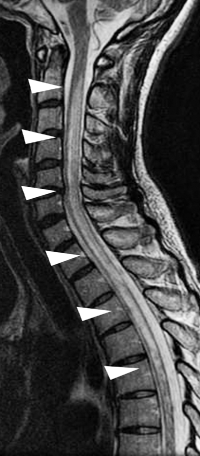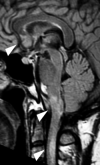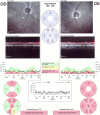Clinical spectrum and treatment of neuromyelitis optica spectrum disorders: evolution and current status
- PMID: 24118482
- PMCID: PMC8029254
- DOI: 10.1111/bpa.12087
Clinical spectrum and treatment of neuromyelitis optica spectrum disorders: evolution and current status
Abstract
Neuromyelitis optica (NMO) is an inflammatory neurologic disease clinically characterized by severe optic neuritis (ON) and transverse myelitis (TM). The relationship between NMO and multiple sclerosis (MS) has long been a matter of debate. However, the discovery of an NMO-specific autoantibody, NMO-immunoglobulin G/aquaporin 4 (AQP4) antibody, has dramatically advanced our understanding of the disease, and the clinical, magnetic resonance imaging (MRI), optical coherence tomography, and laboratory examinations have clarified unique features of NMO that are distinct from MS. The term NMO spectrum disorders (NMOSD) incorporating spatially limited forms was introduced, as patients with recurrent or simultaneous bilateral ON or recurrent longitudinally extensive TM (LETM) alone are also often AQP4 antibody-seropositive. Moreover, studies of seropositive cases have shown that more than half of them have brain lesions, some of which are unique to NMO, and can be the onset manifestation. Some clinical features of AQP4 antibody-seronegative NMO differ from seropositive, but it remains unknown whether they are pathologically distinct. Immunosuppressive treatments are effective for acute attacks and prevention of relapses of NMOSD, and new molecularly targeted drugs are under investigation. Importantly, some disease modifying drugs for MS may exacerbate NMOSD, making early differential diagnosis of the two diseases crucial. We review the evolving clinical spectrum, the updated clinical, MRI, neuro-ophthalmological and laboratory findings, and the current status of treatment in NMOSD.
Keywords: aquaporin-4 antibody; clinical spectrum; neuromyelitis optica; treatment.
© 2013 International Society of Neuropathology.
Figures




References
-
- Adoni T, Lino AM, da Gama PD, Apostolos‐Pereira SL, Marchiori PE, Kok F, Callegaro D (2010) Recurrent neuromyelitis optica in Brazilian patients: clinical, immunological, and neuroimaging characteristics. Mult Scler 16:81–86. - PubMed
-
- Apiwattanakul M, Popescu BF, Matiello M, Weinshenker BG, Lucchinetti CF, Lennon VA et al (2010) Intractable vomiting as the initial presentation of neuromyelitis optica. Ann Neurol 68:757–761. - PubMed
-
- Asgari N, Nielsen C, Stenager E, Kyvik KO, Lillevang ST (2012) HLA, PTPN22 and PD‐1 associations as markers of autoimmunity in neuromyelitis optica. Mult Scler 18:23–30. - PubMed
Publication types
MeSH terms
Substances
LinkOut - more resources
Full Text Sources
Other Literature Sources
Medical
Miscellaneous

